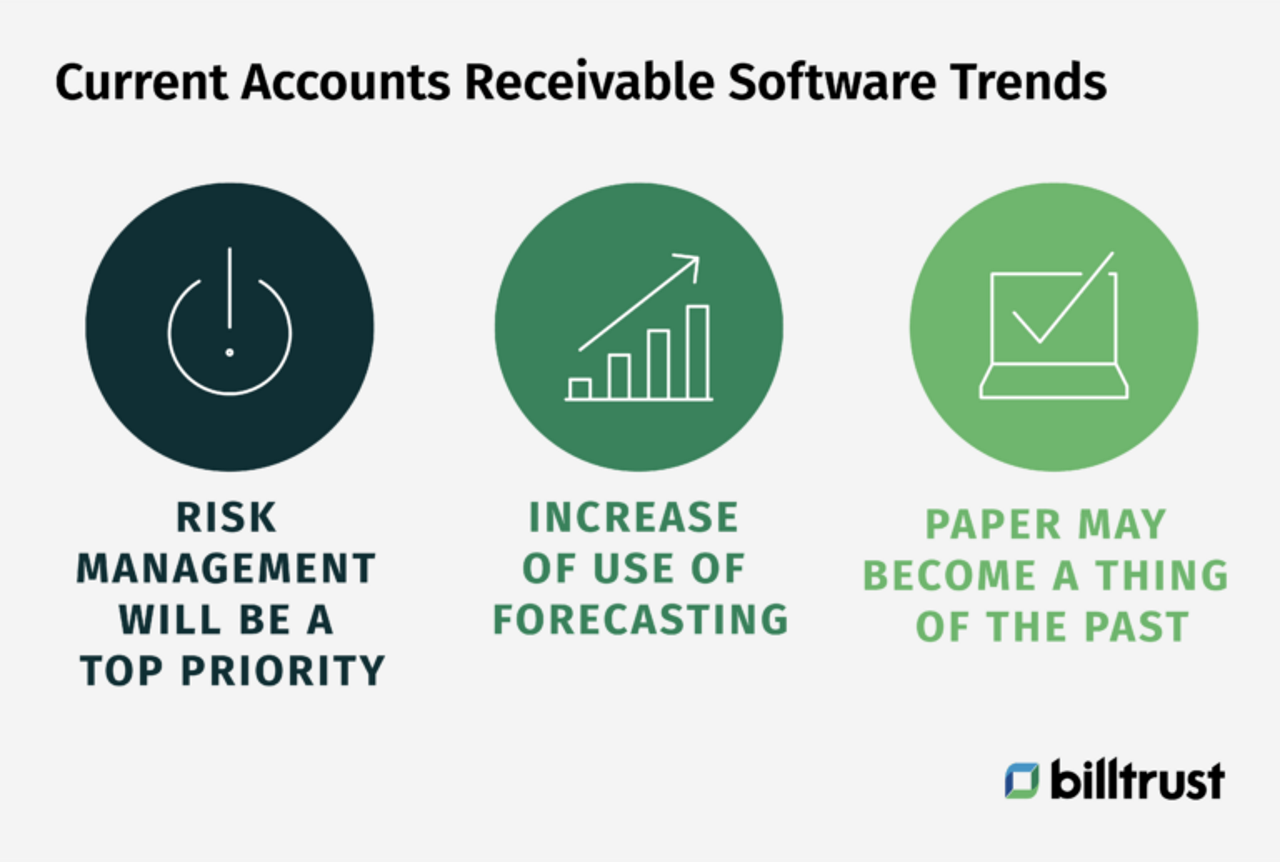By Mitchell Rose, Billtrust SVP Sales Corporate Segment
With the modern world’s widespread adoption of AR automation, it’s an understatement to say that the process of digital payments and invoicing is changing. Touchless cash applications allow customers to scan a QR code at a physical store and automatically convert their fiat currency to cryptocurrency. Predictive analytics, digital payments and invoicing, touchless cash applications, and proactive account coverage are also proliferating to analyze consumers' shopping patterns by looking at their spending habits over time.
The world is transforming through the ever-changing landscape of AR benefits and processes. Are your company’s AR processes modernized to adapt to changing times, however? Read on to gauge the steps of corporate accounts receivable (AR) process modernization to gauge where you stand in the new wave of accounts receivable and what leveling up your adoption of the latest AR trends could mean for you!

Are your AR processes modernized?
“Old fashioned” is not how most of us want our accounts receivable (AR) operation described, especially in today’s environment where adapting to slower mail service and remote work in the pandemic’s wake has been a loud call-to-action to automate and build a digital relationship with your customers.
What once passed for state-of-the-art accounts receivable (AR) processes won’t work well today, and AR teams still have a long way to go to achieve the status of running a “modern” operation. Those are just some of the findings of a 2021 study commissioned by Billtrust where over 350 accounting/finance senior leaders shared their view of a high-performing, modern AR organization. According to the research, most modern AR teams were found to have these unique characteristics:
- 100% digital payments and invoicing. All payments accepted are digital and invoices are presented to customers electronically.
- Cash forecasting. Unlike traditional AR capabilities, best-in-class teams can forecast their cash flow and proactively identify liquidity issues.
- Predictive analytics. AR teams leverage cutting-edge machine learning and predictive analytics for reporting and accuracy.
- Touchless cash application. Reconciliation is done automatically without the need for human intervention.
- Highly-proactive account coverage. Best-in-class teams reach out to past-due accounts before they escalate.

The research also reveals that best-in-class teams measure success differently by placing an increased importance on KPIs like customer satisfaction, cash conversion and collections effectiveness along with measures like days sales outstanding (DSO). This reflects a shift in focus for AR beyond cash flow to more programmatic efforts to manage collections and deliver a better customer experience.

The four-stage spectrum on an AR team’s modernization journey
The research identifies a 4-stage spectrum on an AR team’s modernization journey starting with “Stage 1: Manual” up to “Stage 4: Best-in-Class.” Below is an overview of typical company characteristics in each stage of their maturity journey along with recommendations that can be adopted to move toward best-in-class status.
“Stage 1: Manual” is characterized by:
- Heavy paper check payments and invoicing.
- Focusing on total loss prevention for credit application.
- Key and critical account coverage only for collections.
- Measuring performance based on immediate cash flow (DSO).
If you’re in the manual phase, the initial focus should be on making it easier for your customers to pay you electronically. Offer a self-serve portal that can be accessed 24/7 where your customers can view invoices and make payments. You want to aim for at least 50% digital payments and invoicing. Also consider automating collections to move from only covering key accounts to more proactive account coverage.
“Stage 2: Scaling” is characterized by:
- Around 50% of payments and invoicing are digital.
- Using a lockbox with data keying.
- Some loss prevention for credit application.
- Reactive account coverage for collections.
- Measuring performance based on Collections Effectiveness Index (CEI) along with days sales outstanding (DSO).
In addition to the Stage 1 items, move up the ladder by aiming for mostly digital payments and invoicing – the closer you can get to 100%, the better. In this stage, you are implementing communications programs to your customers to encourage them to receive, and more important, pay invoices electronically. Also, continue to focus on proactive account coverage. To move from reactive to proactive, collections policies can be standardized and automated with a collections software tool.
“Stage 3: Modern” is characterized by:
- 75% of payments and invoicing are digital.
- Rule-based cash application.
- Viewing AR as a revenue generator for credit application.
- Proactive account coverage for collections.
- Measuring performance based on Collections Effectiveness Index (CEI) along with days sales outstanding (DSO).
In addition to Stage 2 recommendations, modernize further by adopting machine learning-based cash application vs. less efficient rule-based methods which require custom programming. Machine learning-based systems can predict more accurate invoice and remittance matches. Also, if your customers use AP portals, automate invoice submission into the various portals. Further, automate processing and reconciliation of payments that come from banks and accounts payable (AP) portals.
“Stage 4: Best-in-Class” is characterized by:
- Nearly 100% of payments and invoicing are digital.
- Cash forecasting.
- Predictive analytics.
- Touchless cash application with a payments network.
- Total revenue generation.
- Highly proactive account coverage.
- Performance based on customer satisfaction.
Best-in-class accounts receivable (AR) teams
Last but not least, “Best-in-Class” AR teams were also found to typically perform better than the average AR department across many KPIs with:
- 25% better customer service levels.
- 15% faster payments.
- 23% collections improvement.
- 12% more organized cash application.
- 20% more self-service capabilities.

Are you ready to take your AR processes to the next level?
There’s no doubt that relying on paper checks and the USPS won’t get companies where they need to be in terms of cash flow. Let’s get rid of the “old-fashioned” label when it comes to our AR processes.
About the author
Mitchell Rose is Senior Vice President and General Manager, Corporate Segment at Billtrust, where he has worked with hundreds of businesses to help them automate their order-to-cash process. Before Billtrust, he held senior-level marketing positions with Coca-Cola, Mattel and Warner Lambert. Mitch holds an MBA from Columbia University in Marketing and a BS in Applied Economics from Cornell University.

